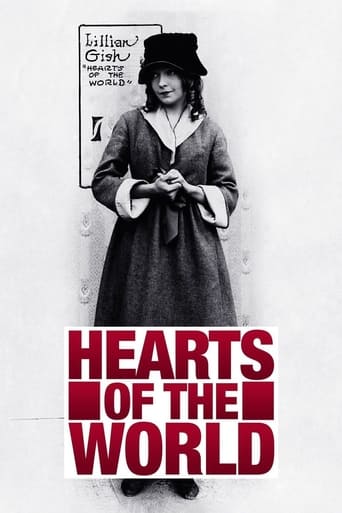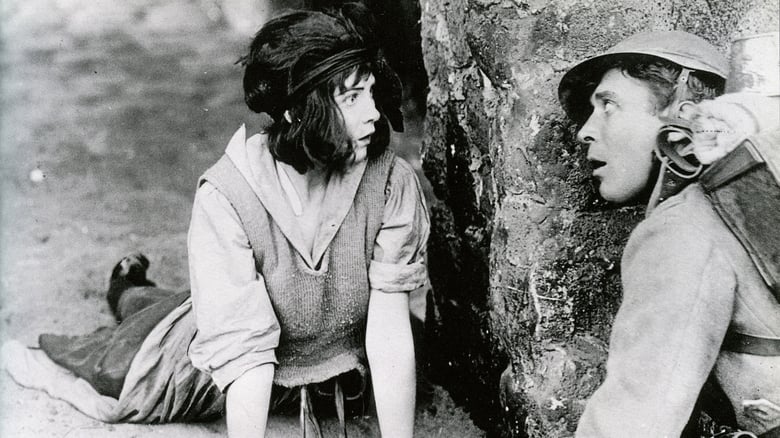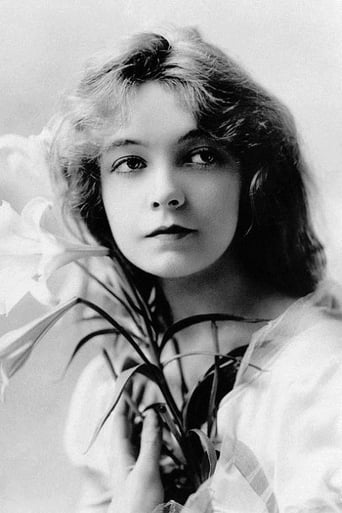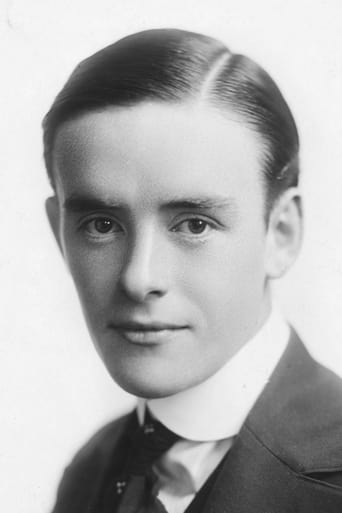Hearts of the World (1918)
A group of youngsters grow up and love in a peaceful French village. But war intrudes and peace is shattered. The German army invades and occupies village, bringing both destruction and torture. The young people of the village resist, some successfully, others tragically, until French troops retake the town.
Watch Trailer
Cast
Reviews
I like the storyline of this show,it attract me so much
A brilliant film that helped define a genre
This is one of the few movies I've ever seen where the whole audience broke into spontaneous, loud applause a third of the way in.
Through painfully honest and emotional moments, the movie becomes irresistibly relatable
HEARTS OF THE WORLD (Paramount/Artcraft, 1918), under personal direction by D.W. Griffith, which lives up to it's subtitle, "an old-fashioned play with a new fashioned theme," is an important contribution to the American silent screen. Known as a propaganda effort, Griffith brings forth his feelings towards war with opening inter-title: "God help the nation that begins another war of conquest of meddling. Brass bands and clanging sabers make fine music, but let us remember that there is another side of war. After all, does war settle any question? The south was divided - thousands of lives were sacrificed by the Civil War, yet did it really settle the black and white problem in this country?" Following the pattern of Griffith's controversial melodrama, THE BIRTH OF A NATION (1915), HEARTS OF THE WORLD, at two hours, is very much a recycling of that epic, moving its time frame from the Civil War South (1861-1865) to its more recent battleground of the World War (1914-1918), making this particular one something from the time capsule.The narrative begins during the peaceful days of 1912 in an unnamed French village where two American families, the Hamiltons (Jack Cosgrove and Kate Bruce) and the Stephensons (Adolphe Lestina and Josephine Crowell) live in a double house on the Rue De La Paix (Street of Peace). Marie Stephenson (Lillian Gish), having just returned from her visit with her aunt in Rheims, and Douglas Gordon Hamilton (Robert Harron), an artist and poet just back from Paris, with three younger brothers (Marion Simmons, Francis Marion) and the littlest one (Ben Alexander) who worships him, the neighboring boy and girl eventually meet, start a courtship that turns to eternal love. On the day of their wedding, war is declared. Douglas enlists along with his friends, Cuckoo (Robert Anderson), and the village carpenter (George Fawcett), calling themselves "The Three Musketeers." As Douglas leaves Marie to fight for France, so does Cuckoo, who has fallen in love with a street singer known as "The Little Disturber" (Dorothy Gish). As the men face uncertainties fighting in the trenches, the once peaceful village is taken over by Von Strohm (George Siegmann), leader of the enemy Germans who once lived in that village, not only has his regiment burn portions of it, but places the women to extreme measures working labor jobs, to be brutally whipped (namely Marie) when unable to fulfill their tasks. Part II, "Struggle of Civilization" soon follows.In spite of its age, HEARTS OF THE WORLD is fine storytelling with many elements now associated by Griffith, from the development of his central characters (the Griffith trademark where families affectionately kiss on the mouth); to his attention to detail with the camera recording fine visuals of actual location footage around France, and inter-cutting between war on the front and survival in the village. The scene where the younger Hamilton boys taking it upon themselves to bury their dead mother ("No prayers, save childish tears") is highly effective and quite moving. With the large cast headed by Griffith's most frequent co-stars, Lillian Gish and Robert Harron, the center of attention is nearly drawn towards Lillian's sister, Dorothy. The Gish sisters, who share little screen time together, work remarkably well in their assigned roles. Lillian, an outstanding actress here in the manner of Mary Pickford sporting curly hair, starts off her girlish charms as the aggressor attracting the boy next door, maturing as the story progresses. Her most dramatic moment occurs following the death of her mother. Her facial change of emotions from disbelief to shock is realistically done. Under incapable hands, this scene would have been laughable. Another scene worth noting occurs later as Gish's character walks aimlessly through the battlefield only to find her wounded beloved (Harron), whom she mistakes as dead. As for Dorothy, she provides the lighter side to the story with her comedic flair as the flirtatious young girl who attracts men with a blink of an eye. At one point she forces herself upon the boy (Harron) the very moment to be spotted by the girl (Lillian) who loves him. Wearing a large beret over her very dark hair and sporting ordinary clothes, her role could very well be the predecessor to Renee Adoree's performance in King Vidor's epic war drama, THE BIG PARADE (MGM, 1925) or categorized as a predate of the high-spirited Clara Bow of the 1920s. Regardless, Dorothy Gish, an underrated actress whose many movies lack availability today, deserves praise for her work as "The Little Disturber." Other members in support are include L. Lowery (The Deaf and Blind Musician); George Nichols (The German Sergeant); Erich Von Stroheim (The German Soldier); and Fay Holderness (The Innkeeper). Appearing briefly are Mary Gish (Lillian & Dorothy's mother); and future playwright/actor Noel Coward as a man with wheelbarrow.With occasional revivals at New York City's Museum of Modern Art's film department, HEARTS OF THE WORLD was introduced to New York's own public television WNET, Channel 13, in September 1977, as part of its weekly series, "Films of Persuasion," the second movie following the premiere presentation of Griffith's BIRTH OF A NATION. Distributed to home video in 1991, with excellent piano score by William Perry from the Killiam Collection, HEARTS OF THE WORLD did have limited cable TV presentation on Turner Classic Movies "Silent Sunday Nights" where it premiered in January 2, 2000. Though presented on VHS, the two minute prologue prior to the movie showing D.W. Griffith filming in the British line of Cambrin, 50 yards from enemy lines, concluding with he shaking the land of prime minister David Lloyd George on 10 Downing Street, is not included in the TCM print.Nearly forgotten, HEARTS OF THE WORLD deserves its place in cinema history, and certainly one to consider for film scholars and historians to view and study as one of the few movies from that era not to be lost to the world. (***)
I just returned from a screening of Hearts of the World at the Museum of Modern Art in New York. This screening showed a restored version of the film with live piano accompaniment by the brilliant pianist, Donald Sosin. The film itself was quite spectacular but it was made even more so by the incredible artistry of Donald Sosin. He played for the entire 2 1/2 hours, without a break, and with just a few notated markings. He presented a very operatic treatment of the story, which suited the plot perfectly. I was fascinated by his ability to improvise many musical themes and leitmotivs-all with such great flare and virtuosity. I must admit that these silent films can have very fragile plots but with the right kind of music accompanying them, they take on real substance and even nuance. MOMA should be congratulated for taking silent films so seriously and making sure that they all receive live musical accompaniment
The Great War's impact on cinema worldwide was enormous and opened the door to America's global dominance in the business as other countries were devastated by battle. Additionally, it created some interesting American films among a newly popularized genre of war pictures, including "Civilization" (1916), "Joan the Woman" (1917), "Shoulder Arms", "The Sinking of the Lusitania", "The Heart of Humanity" and this one, "Hearts of the World" (the latter four from 1918). And continuing into the silent era of the 1920s, with some distance from the war, such films as "The Four Horseman of the Apocalypse", "The Love Light" (both 1921), "The Big Parade" (1925), "Mare Nostrum", "What Price Glory" (both 1926), "Seventh Heaven" and "Wings" (both 1927) were made.D.W. Griffith was generally a pacifist; that's clear in many of his films, despite their exciting battle sequences. Not unexpectedly, however, with "Hearts of the World", he gave his support to the entente cause and with the aid of the British government called for the US entry into the war. That had already occurred by the time of completion of the film, though, and so the ending has the US army saving the day. Yet, the picture still contains a pacifist plea, or regret over the situation.The excellent war scenes, which incorporate actual footage from the front, add power and realism to the sympathetic message. Cinematographer G.W. Bitzer (or others under his influence, as he was absent from location shooting in France due to his German heritage) uses small-scale widescreen masking effects during the battle scenes, as he had in "Intolerance". It's effective, as the scenes are generally shown from a distance, more so, and surely for practical reasons, than in other Griffith films. As a result, it seemed more real to me (and much of it was real).Generally, I welcome the drama of love between Robert Harron and Lillian Gish's characters threatened against the backdrop of war. Gish's episode with insanity is especially well realized, and Dorothy Gish is delightful as "The Little Disturber". But, the drama does subvert the power and realism of the film at times. It is indeed "an old fashioned play", and there are some ludicrous moments in it, such as a rehashed scene from "The Birth of a Nation" where Gish's virginity is threatened by a German officer.The following year, Abel Gance demonstrated how a fictional story could add to the power and realism in his anti-war opus "J'Accuse!" And, that's what separates these two films. In "J'Accuse!", there is rape by a German soldier and an analogous love triangle. Its approach is considerably more downbeat, however, and much more real, rather than the old-fashioned sentimentality, theatricality and naivety that occasionally creeps up in "Hearts of the World". Yet, that's to be expected in Griffith's work, and it doesn't detract severely from the better parts of the film, or the drama. Overall, "Hearts of the World" represents and reflects an important time in both film history and world history.
Representative of all the innocent HEARTS OF THE WORLD, two American families living in a picturesque French village experience the horror & devastation of the Great War.This rarely seen film is the result of a somewhat surprising collaboration between the British government & genius American filmmaker D.W. Griffith. With the hideous World War still burning across Europe, the old men in Downing Street thought it would be well if filmed propaganda was produced which might help induce America into joining The Effort.After his tremendous achievements with THE BIRTH OF A NATION (1915) & INTOLERANCE (1916), it was obvious that Griffith was the world's foremost cinematic director. A devout pacifist, he undertook the difficult challenge of turning battlefield horrors into a story suitable for the screen. That accomplished, Griffith actually took some of his cast & crew across the dangerous Atlantic to London (and a meeting with Prime Minister David Lloyd George) and then it was on to France for some quick filming at the front lines.All of which proved unnecessary. Infuriated by Berlin's unrestricted use of submarine warfare, America declared war on Germany in April of 1917, months before HEARTS OF THE WORLD could be completed back in Hollywood.While not as innovative or groundbreaking as its two celebrated predecessors, HEARTS OF THE WORLD can stand on its own merits. Filled with Griffith's special touches, its principle value exists in its revelation of his contemporaneous feelings about the War, even as the conflict still raged. He bestowed on it sequences as poignant and harrowing as any in his oeuvre. Who can forget Lillian Gish on her wedding day, driven mad by the bombardment, preparing to spend her bridal night alongside the corpse of her betrothed? Or the sight of three little boys secretly burying their dead mother in a cellar, so her body would not be disgraced by the enemy. Griffith assures scenes such as these are not easily banished from the viewer's memory.Besides the numinous Miss Gish, appreciation should be extended to Bobby Harron as the film's stalwart hero; this fine young actor would die in 1920 of an accidental gunshot wound, not a suicide as is usually reported. Dorothy Gish plays a feisty, comedic role, giving the film a light touch at welcome intervals. Josephine Crowell & Kate Bruce are memorable as the two tragic mothers, both victims of the war.Also appearing are a couple of stars in embryo: a young Sir Noël Coward is the extra pushing the wheelbarrow containing Miss Lillian's luggage in her first scene. Technical Supervisor Erich von Stroheim is easily recognizable as a bald German officer; he would eventually dominate Hollywood's silent films of the 1920's, using the full force of his own, rather bizarre, genius.Special appreciation should be paid to the splendid cinematography of Billy Bitzer, who performed yeoman service for Griffith in several of his epics.





